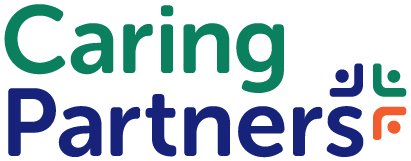Senior Care Marketing
Content Marketing
Content Spark: Alzheimer’s Awareness — What to Do First After Dementia Discovered or Diagnosed

In 1983, President Ronald Reagan designated November as National Alzheimer’s Disease Awareness Month. This observance continues to this day, with a Presidential Proclamation and organizational activities like those from the Alzheimer’s Association. While much of the content is focused on disease facts, consider covering this topic this month from another angle: What to do when you suspect a loved one has Alzheimer’s, or you’ve just received the diagnosis (What next?). This is not only practical and helpful, it can also help your content stand out from the rest of the coverage this month.
Content Tips for Any Senior Care Company
Give context about how many people are affected by Alzheimer’s in the United States, and provide any other relevant facts about the disease — to both educate and raise awareness. Then transition into tips for those who suspect their loved one has dementia or for those whose loved one has just received the diagnosis.
Interview experts: It could be a geriatric care manager, a dementia specialist, a geriatrician, a lawyer or estate planner. It could be that you talk to all such experts and compile their advice as a holistic plan for the family caregiver. What do they recommend that the family caregiver do first, second, third, etc.?
Include quotes or stories from the family members of those you serve who have this disease. What did they do first? Looking back on their experience, what do they wish they’d known? What tips would they share with others in this position now?
Do Be Careful! Especially for patients with dementia, issues of consent and privacy for use of their images, names, or other “personally identifiable information” get tricky. Mentioning that someone is living in a memory care community could be seen as releasing protected health information. If you’re concerned, leave out names and don’t post photos.
Make the content easy to read — at a glance, quickly. It can be overwhelming to face this situation, and looking at page of thousands of words may not be feasible or desirable for family caregivers at this time. Use bullets or numbered lists, pull quotes, images, short paragraphs and sub-headlines, for example, as techniques to help make the content more palatable.
Content Tips for Senior Living Communities
If you are a memory care community, you have lots of expertise on this subject and this is your opportunity to really demonstrate that fact and shine to prospective residents’ family members. However, avoid content that comes across as too focused on closing the sale though — instead focus on being as helpful as possible, to be a trustworthy guide rather than a slick, self-interested salesman.
Consider a “do’s and don’ts” or “when to know it’s time” for family caregivers considering or planning a move to a memory care community for their loved one. While the suspicion or diagnosis may be new, it’s never too early to start thinking ahead to the option of a professional memory care community and plan or prepare for it.
Content Tips for Home Care Agencies
What have you learned from helping families whose loved one was suspected as having dementia or who was recently diagnosed with Alzheimer’s? By reflecting on these insights, and including your tips and how your agency helped, you can provide the guidance that other families in this position really need.
Caring Resources to Support this Spark
Additional Resources to Support this Spark
Dayna Steele on Huffington Post: “The First 5 Things to Do After an Alzheimer’s Diagnosis”
Alzheimer’s Association — Honor a Caregiver site (with info on supporting them too); they also have the latest stats on Alzheimer’s disease
Content Sparks are part of Caring.com’s Content Made Simple program. See all of the Content Sparks.

You May Also Like This
Senior Care Marketing
Content Marketing
Content Spark: Alzheimer’s Awareness — What to Do First After Dementia Discovered or Diagnosed

In 1983, President Ronald Reagan designated November as National Alzheimer’s Disease Awareness Month. This observance continues to this day, with a Presidential Proclamation and organizational activities like those from the Alzheimer’s Association. While much of the content is focused on disease facts, consider covering this topic this month from another angle: What to do when you suspect a loved one has Alzheimer’s, or you’ve just received the diagnosis (What next?). This is not only practical and helpful, it can also help your content stand out from the rest of the coverage this month.
Content Tips for Any Senior Care Company
Give context about how many people are affected by Alzheimer’s in the United States, and provide any other relevant facts about the disease — to both educate and raise awareness. Then transition into tips for those who suspect their loved one has dementia or for those whose loved one has just received the diagnosis.
Interview experts: It could be a geriatric care manager, a dementia specialist, a geriatrician, a lawyer or estate planner. It could be that you talk to all such experts and compile their advice as a holistic plan for the family caregiver. What do they recommend that the family caregiver do first, second, third, etc.?
Include quotes or stories from the family members of those you serve who have this disease. What did they do first? Looking back on their experience, what do they wish they’d known? What tips would they share with others in this position now?
Do Be Careful! Especially for patients with dementia, issues of consent and privacy for use of their images, names, or other “personally identifiable information” get tricky. Mentioning that someone is living in a memory care community could be seen as releasing protected health information. If you’re concerned, leave out names and don’t post photos.
Make the content easy to read — at a glance, quickly. It can be overwhelming to face this situation, and looking at page of thousands of words may not be feasible or desirable for family caregivers at this time. Use bullets or numbered lists, pull quotes, images, short paragraphs and sub-headlines, for example, as techniques to help make the content more palatable.
Content Tips for Senior Living Communities
If you are a memory care community, you have lots of expertise on this subject and this is your opportunity to really demonstrate that fact and shine to prospective residents’ family members. However, avoid content that comes across as too focused on closing the sale though — instead focus on being as helpful as possible, to be a trustworthy guide rather than a slick, self-interested salesman.
Consider a “do’s and don’ts” or “when to know it’s time” for family caregivers considering or planning a move to a memory care community for their loved one. While the suspicion or diagnosis may be new, it’s never too early to start thinking ahead to the option of a professional memory care community and plan or prepare for it.
Content Tips for Home Care Agencies
What have you learned from helping families whose loved one was suspected as having dementia or who was recently diagnosed with Alzheimer’s? By reflecting on these insights, and including your tips and how your agency helped, you can provide the guidance that other families in this position really need.
Caring Resources to Support this Spark
Additional Resources to Support this Spark
Dayna Steele on Huffington Post: “The First 5 Things to Do After an Alzheimer’s Diagnosis”
Alzheimer’s Association — Honor a Caregiver site (with info on supporting them too); they also have the latest stats on Alzheimer’s disease
Content Sparks are part of Caring.com’s Content Made Simple program. See all of the Content Sparks.


